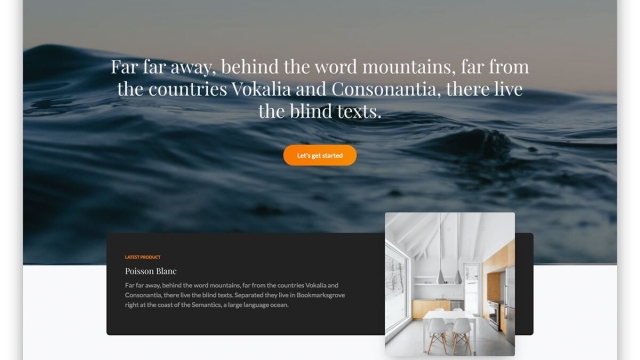
Unleashing Creativity: The Art of Successful Web Design
Whether you’re a seasoned designer or a novice exploring the vast world of web design, one thing remains constant: the power of creativity. In a digital landscape where visual appeal and user experience are of paramount importance, the art of web design has become more influential than ever before. From choosing the right color schemes to crafting intuitive navigation menus, every aspect plays a role in creating engaging and successful websites.
As the internet continues to evolve, so do the expectations of users. With attention spans dwindling and competition intensifying, web designers must think outside the box to captivate their audience. Gone are the days when simply throwing together a few pages of content would suffice. In today’s hyperconnected world, it takes a delicate blend of aesthetics and functionality to stand out from the crowd. Web design has become an art form that demands careful thought, meticulous planning, and a touch of ingenuity. So, embark on this journey of discovery as we delve into the depths of web design and uncover the secrets to unlocking your creative potential.
Understanding User Experience
In the world of web design, user experience (UX) plays a crucial role in determining the success of a website. It is the art of crafting digital spaces that are not only visually appealing but also intuitive and engaging for the users.
When designing a website, it is important to put yourself in the shoes of the visitors. User experience encompasses everything from how easily they can navigate through the site, find information they are looking for, to how enjoyable and efficient their overall interaction is. A well-designed website should anticipate user needs and provide them with a seamless and satisfying experience.
To achieve a positive user experience, designers must consider factors such as usability, accessibility, and responsiveness. Usability refers to the ease with which users can interact with a website and find what they are looking for. Accessibility ensures that the website is usable by all individuals, regardless of their abilities or disabilities. Lastly, responsiveness focuses on optimizing the website for various devices, ensuring that it looks and functions well on desktops, tablets, and mobile phones.

By understanding the user experience, designers can create websites that not only look aesthetically pleasing but are also functional and user-friendly. Through thoughtful consideration of user needs and preferences, designers can unleash their creativity to deliver an immersive and enjoyable web experience.
Designing for Accessibility
When it comes to web design, one of the most important aspects to consider is accessibility. Ensuring that your website is accessible to all users, regardless of their abilities, is not only ethically important but also key to creating a successful online presence.
A key aspect of designing for accessibility is to make sure that your website’s content is easily perceivable. This means using clear and concise language, using appropriate contrast between text and background colors, and providing alternative text for images. By making your content easy to perceive, you can cater to users with visual impairments or other disabilities that may affect their ability to fully interact with your website.
Another consideration when designing for accessibility is to ensure that your website is easily navigable. This can be achieved by organizing your content in a logical and intuitive manner, using headings and subheadings to provide a clear structure, and incorporating keyboard navigation options. By providing multiple ways for users to navigate your website, you can accommodate individuals who may have difficulty using a mouse or touch screen.
Lastly, designing for accessibility also means considering the different devices and technologies that users may use to access your website. Responsive design, which allows your website to adapt to different screen sizes and resolutions, is crucial in ensuring that your website is accessible on various devices, such as smartphones, tablets, and desktop computers. Additionally, optimizing your website for assistive technologies, such as screen readers or voice recognition software, can greatly enhance the accessibility of your website for users with disabilities.
In conclusion, incorporating accessibility into your web design process is essential for creating a successful and inclusive online experience. By designing for accessibility, you can ensure that all users, regardless of their abilities, can access and engage with your website effectively.
Incorporating Visual Elements
Custom Storage Sheds
Designing a visually appealing website is crucial in capturing the attention of visitors. The strategic use of visual elements can greatly enhance the overall user experience. Here are some tips to effectively incorporate visual elements into your web design:
Colors:
Choosing the right color palette is essential for creating a visually engaging website. Colors evoke certain emotions and can help convey your brand identity. Opt for a harmonious combination of colors that complements your content and enhances readability.Images:
Images play a significant role in web design as they help communicate your message and capture the interest of visitors. Be sure to use high-quality and relevant images that align with your content. Incorporate images strategically to break up text, highlight key points, or showcase your products or services.Icons and Typography:
Icons and typography are powerful visual tools that add flair and personality to your web design. Icons can be used for navigation menus, social media links, or to represent different sections of your website. Choose fonts that are easy to read and reflect the tone and style of your brand.
Remember, a well-designed website not only looks visually appealing but also enhances the overall user experience. By incorporating the right visual elements, you can create a website that is both visually enticing and effectively communicates your message.

